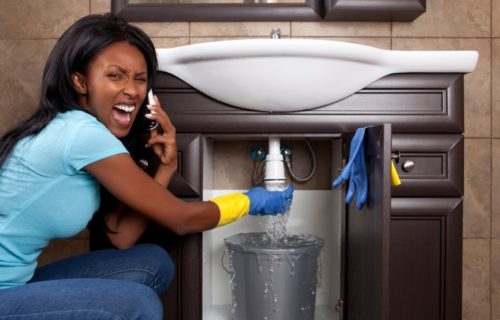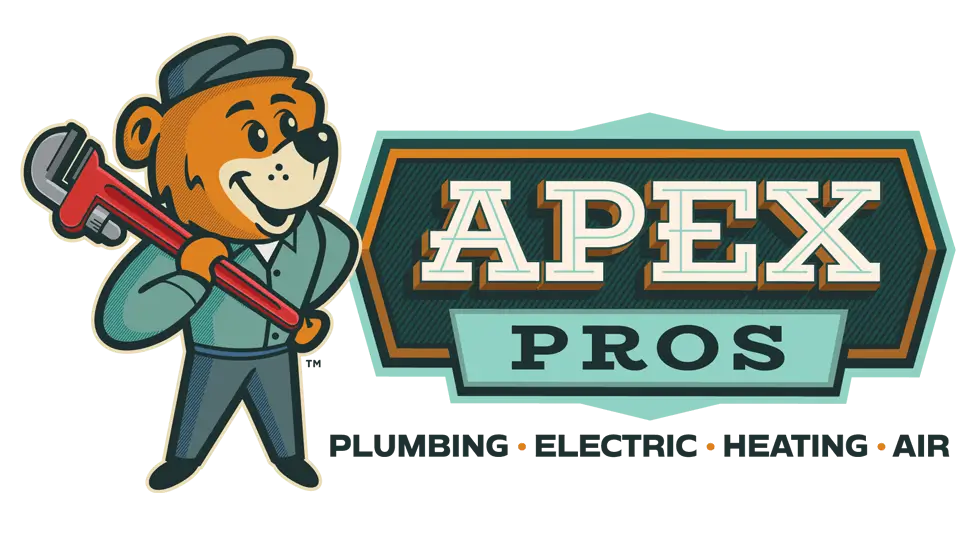
Every Columbus, OH homeowner will eventually experience some kind of plumbing emergency, even if your home isn’t very old yet. It’s bound to happen eventually. There are all kinds of potential plumbing problems you’ll face over the years. The key to solving plumbing emergencies is to take action immediately to limit the scope of the damage. And to do this, you need to be able to recognize the problem right away. So here are five common plumbing emergencies every homeowner will experience at some point.
1. There’s No Running Water
It’s always a bit of a shock when you turn on your kitchen faucet or try to take a shower, and there’s no running water. This can be a serious plumbing emergency for homeowners. But if your water suddenly shuts off in the middle of the day or night, try not to panic.
What to Do
The first thing you want to do is figure out if your entire home has no water or if it’s just one part of the home that is affected. Check all of your sink faucets and showers throughout the house. If you have a hose and faucet in your front or backyard, check that too.
If only a section of your home is affected but not the entire home, then you likely have a clogged or burst pipe somewhere inside your walls. Call us immediately because if you have water leaking inside your walls, that is a major problem that can create a lot of damage in a very short period of time.
If you’ve determined that your entire home is without water, check with your neighbors to see if they are also having the same problem. If so, then there is likely a problem with the water main, and you’ll need to call your homeowner’s association (HOA) or your local municipal water supply for assistance. In some cases, your HOA might already know about the problem and will have taped a notice to your door or sent you an email to let you know how they are handling it.
2. Toilet Won’t Stop Running
An even more common household plumbing emergency is a running toilet. You flush the toilet, and the tank fills back up, but then there just seems to be a continuous trickle of water flowing into the toilet bowl. This might not seem like a big deal, but a toilet that never stops running can actually cause major problems.
First, remember that this tiny trickle of water is non-stop, 24-7. If you were to measure the water being lost here, even a slowly leaking toilet could waste over 100 gallons every day. Fortunately, Columbus, OH and the surrounding areas aren’t experiencing the kinds of water shortages seen in other parts of the country. But still, a single household wasting thousands of gallons of water every month really adds up.
But besides all that wasted water and inflated utility bills, here’s where the “emergency” comes in.
Suppose you use that toilet just before leaving for work tomorrow morning. What if the toilet contents don’t flush all the way down, and the drainpipe clogs up? Your toilet could overflow and dump 50 gallons or more of water all over your house by the time you get home and realize what is happening. And if that’s an upstairs toilet, the damage to your walls, ceiling, and floors could be off the charts.
What to Do
If the toilet is already overflowing, the first step is to stop the water flow. Behind your toilet, there should be a line that connects to the wall. Gently turn that valve clockwise until the water stops. This water line can be easily damaged, so be very cautious when you grab and turn that valve.
If the toilet isn’t overflowing, you don’t need to shut off the water just yet.
Now, we don’t normally recommend DIY plumbing repairs because you can accidentally do a lot of damage. But in this case, the problem might simply be that the chain is slightly tangled. So if you want, you can attempt this one yourself.
Lift the lid off the tank and see if there’s a knot or tangle in the chain. A simple twist with your fingers might be all it needs to untangle and fully extend so that the flapper can seal the tank. If that doesn’t solve the problem, give us a call.
3. Water Heater Is Leaking
Most of today’s traditional tank water heaters last about 8-12 years. After that, you’re likely to encounter leaks due to rust inside the tank or some type of electrical or mechanical failure. If a seal on your water heater fails, or if the tank itself becomes corroded and begins to leak, you could have massive flood damage inside your home in a matter of hours.
Fortunately, many faulty water heaters leak more slowly than that. But whether you have a fast or slow leak, you definitely need to get that problem fixed before the water seeps into your floors and walls.
What to Do
If you notice that your water heater is leaking or that condensation is forming on or around the tank, there could be a few possible problems here. If the fitting on either the supply line or hot water line is leaking, you might be able to just wrap the threads with plumbers tape and tighten them back up.
Other than that, it could be a gasket that needs to be replaced, or maybe the shut-off valve opened and needs to be replaced. If you tend to run your water heater as hot as it will go, the water pressure might be too high – and that’s what caused the valve to pop open. So lowering your water heater temperature down to around 120 degrees Fahrenheit would help prevent that from happening again.
So hopefully, the problem is more about the hardware — as mentioned above — than the tank itself. But if the tank itself is corroded and leaking, then it will need to be drained and replaced. That is a big job that you should leave to the professionals.
4. Pipe Is Leaking Inside Wall or Ceiling
A burst pipe inside one of your walls is probably one of the worst plumbing emergencies you can encounter, especially if the leak is upstairs. If this happens while nobody is at home to notice, you could literally have hundreds of gallons of water all throughout your home by the time someone notices.
Sometimes, the pipe will only have a slow leak due to a pinhole crack in the pipe or a leaky fitting at a joint. But these can also do a lot of damage because the leak can go on for days or weeks before being noticed. By then, the water could soak through several walls and ceilings, and you could have mold growing in there. Cleaning that up can take several days. It can be very expensive and can cause a major interruption to your daily activities.
What to Do
Be on the constant lookout for wet spots or discoloration on your ceilings and walls. Check floorboards from time to time for warpage and water damage. And be mindful of any drop in water pressure from your faucets or showerhead.
If you spot any signs of a leaky pipe in your walls or ceilings, call right away for emergency plumbing services.
5. Sewer Line Is Clogged or Damaged
Sewer lines are another big problem many homeowners will eventually face, especially those with older homes. At some point, the sewer lines will encounter problems, and it could be a major headache if those lines aren’t fixed or replaced soon.
If you smell raw sewage outside your home – perhaps in your front yard – you could have a broken sewer line. If you smell sewage inside your home coming from your sinks or shower drains, that could be a sign of a clogged sewer line. Gurgling slow-draining drains are another sign of sewer line problems.
What to Do
Call a plumber right away. The gasses created by raw sewage can be toxic, but you also don’t want to delay because you could make a small problem grow into a bigger one.
First, we’ll figure out if you have a simple clog or if there’s more serious damage that needs to be addressed. A slow drain might seem like it’s just a simple clog, but sometimes the real problem is that you have tree roots penetrating your sewer lines and growing inside them. Depending on the source and extent of the problem, you might need to have entire sections of the sewer line replaced. Again, an inspection from a professional plumbing company will be in order.
If you’re experiencing any plumbing emergencies like the ones described here, contact Apex Plumbing, Heating, and Air Pros right away for help. We also provide a full range of plumbing services, including tankless water heater installation, bathroom remodeling, and whole-house water filtration.





